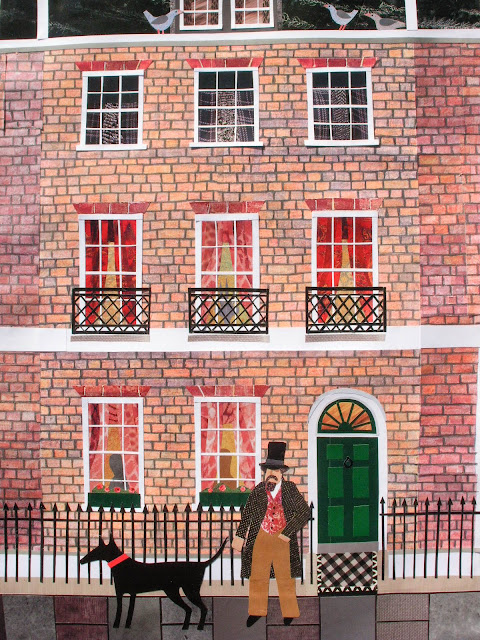You find me struggling with the garden, not an hour since I was hacking back the ivy (which is going bonkers - or should that be growing bonkers?) and potting up some pansies.
But my mind and inward eye was on Jane Austen's shrubs and borders which are what's on my ancient drawing board (a venerable and battered piece of solid wood that dates from my first week at art school more years ago than I care to remember - I may upload a photo of it some time).
As you see, I am still at the piecing and plotting stage after laying in a crazy quilt-style lawn.
Here's my original doodle:
Jane Austen's great-niece said:
"I remember the garden well, a very high thick hedge divided it from the Winchester road and around it was a pleasant shrubbery walk, with a rough bench or two where, no doubt, Mrs Austen and Cassandra and Jane spent many a summer afternoon ..."
Well, I have departed a bit from the rough benches I know though who knows they may yet supercede the more elegant wrought iron furniture.
Anyway, this is the current state of play.
Anything - or then again nothing - may happen in the next 24 hours.








